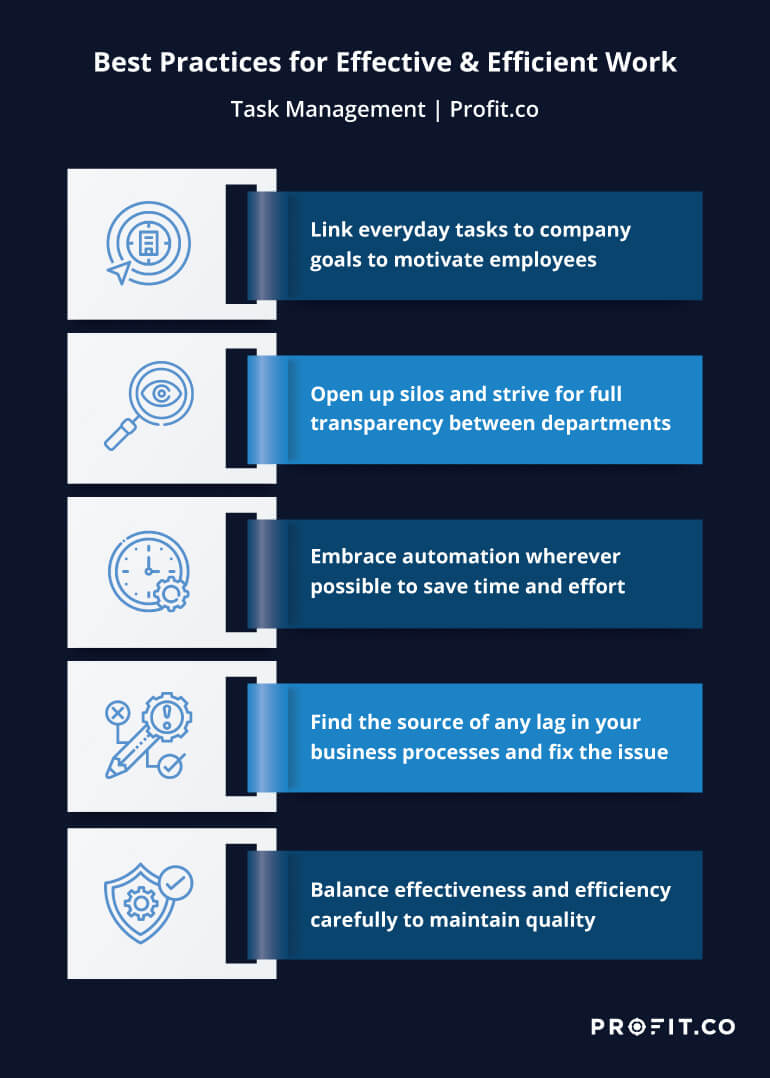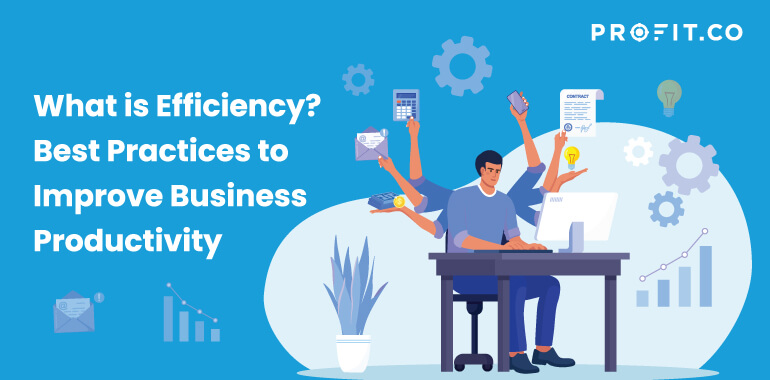According to Forbes, the belief that remote work leads to decreased productivity doesn’t hold much water. Even with the onset of the Covid-19 pandemic and fully remote work, some companies saw better results from their teams.
74% of businesses plan to make a permanent shift to remote work because of this increase in efficiency. So what is efficiency? How is it different from effectiveness or productivity? Understand these terms to improve your business performance.
What is Efficiency?
The Merriam-Webster Dictionary defines “efficient” as something that produces the desired outcome with little to no waste of time or resources. On the other hand, something “effective” simply has the desired result, implying that resource management is not a factor.
Efficiency is doing things right. Effectiveness is doing the right things.
In business, efficiency means getting work done with fewer resources or doing more with less. This means that you meet your goals without wasting resources, whether it’s time, money, materials, energy, or effort. Efficient businesses:
- Identify and prioritize their objectives
- Develop strategies to get the full potential out of their available resources
Effectiveness in business means doing activities that improve your bottom line or meet other company goals. Effective companies achieve their objectives, but usually at a much higher and avoidable cost on their resources.
Difference between Efficient and Effective Teams
A business needs to find the balance between efficiency and effectiveness, but this is harder than it sounds. Let’s use a typical example: developing a pitch deck. An efficient and effective team starts with project planning, creating clearly defined roles for each team member and a clear workflow and timeline. They understand their mission and know how to win the client, partner, or investor.
- If a team is efficient but not effective, the pitch deck may be ready in a shorter time, but it may miss the mark in terms of the client’s needs. The team focuses on beating the deadline, not on their business goals.
- If a team is effective but not efficient, they may build an impressive pitch deck, but it takes much longer to present it to the client. Talent may concentrate on cool graphics or minute pitch details, which eats into the delivery time. If the client forgives the schedule delay, the team must spend even more time to reassure the client to invest in the project.
- Some teams are neither effective nor efficient. They can throw something together in time for pitch day. However, nobody has clear tasks on the project, the communication is poor. Ultimately, they lose the client.
Many teams use flexible software to help them efficiently and effectively execute their goals. Profit.co’s OKR software helps you focus, measure, and achieve your organization’s most important goals– get started free today!
How Efficiency Leads to Better Productivity

Workplace productivity is a measure of an employee’s efficiency. It considers how much output comes out in a work setting, like in an office, lab, or construction site, over a given period.
Workplace productivity statistics can be shocking. Multitasking decreases productivity by 40% and 91% of employees daydream during work meetings. However, if you focus on improving efficiency, you enjoy higher productivity in a business.
Here are some effectiveness vs. efficiency best practices.
1. Link Everyday Tasks to Company Goals
Efficient teams understand how they contribute to business goals every day. This means better task prioritization so that less effort is spent on low-priority activities.
2. Open Up the Silos
The silo mentality is when specific departments in an organization withhold information from others. This usually happens because of fear or power struggles. Sometimes silos develop because information sharing takes too much effort. But whatever the reason, silos are serious barriers to efficiency and productivity.
Motivate teams to be transparent with their knowledge to achieve a unified vision for the business.
3. Embrace Automation
In many cases, integrating automation software has a positive impact on your productivity. Process automation has been proven to improve employee productivity across all industries. With the right software solution, you can automate manual processes like:
- Inventory updates
- Customer service communications
- Employee onboarding materials, and
- Procurement processes
4. Find the Source of the Lag
Identify the situations that lead to;
- Late deadlines
- Burnout
- Employee turnover, and
- Financial losses
When you become more mindful about the pain points in the workplace, you can redistribute your resources to the right team and tasks.
5. The Balance between Efficiency vs. Effectiveness
Let’s be clear: no business can be 100% efficient because too many variables are constantly in play. It’s more reasonable to aim for a balance of efficiency and effectiveness. Audit your key business processes one by one, then make gradual changes to test for improvements. The idea takes time, but it leads to a more productive organization in the long run.
Conclusion
An efficient business understands exactly what needs to be done and by whom. More importantly, efficient companies know what not to do. If teams only focus on getting tasks done as fast as possible, they end up burning more resources to get there. Now that you know what efficiency is, use the best practices above to build a highly productive business today.
If you want to take your efficiency to the next level, take a look at Profit.co’s all-in-one OKR management software, which seamlessly integrates strategy, tasks, performance, and engagement on one central platform! To learn more about how this software can help your team execute your goals with efficiency and effectiveness, book a free demo with our experts today!

